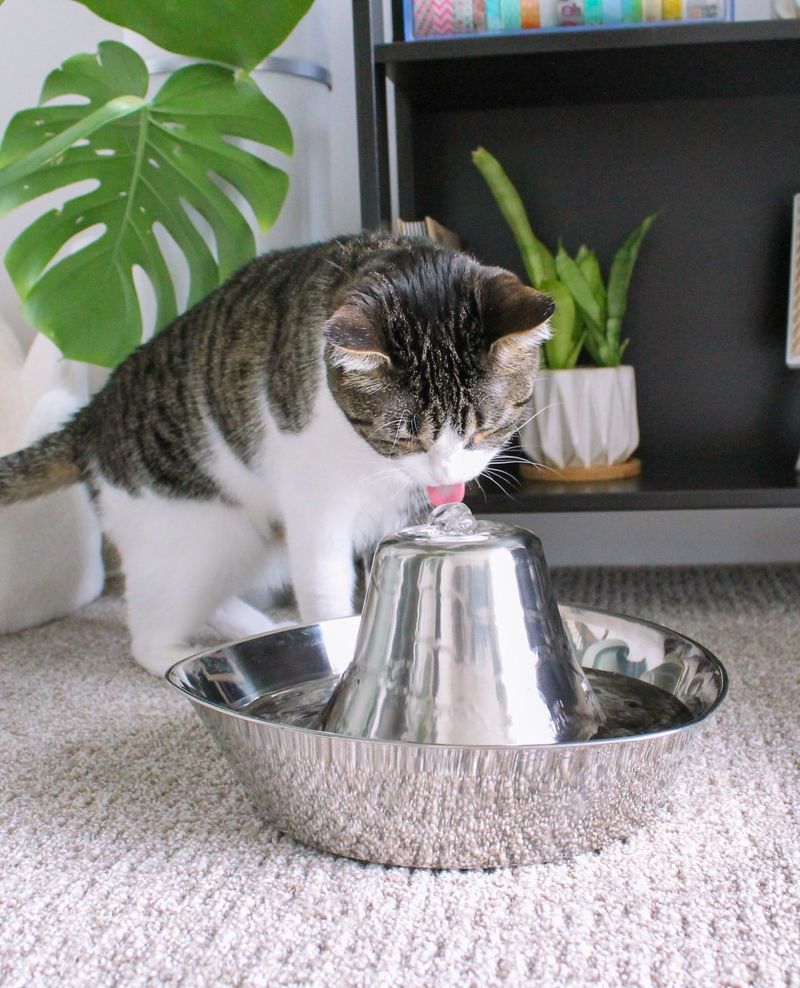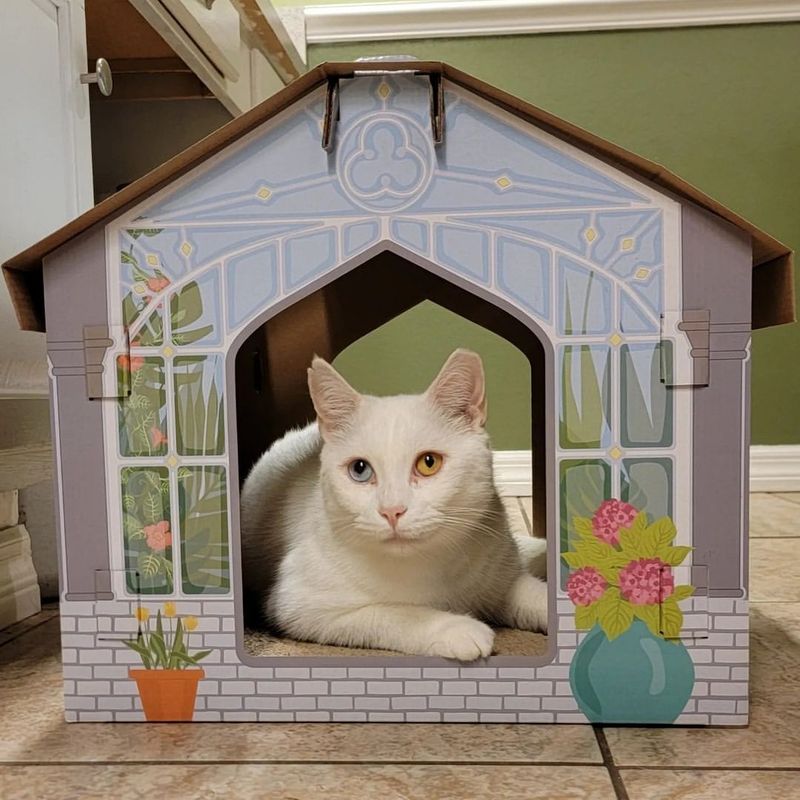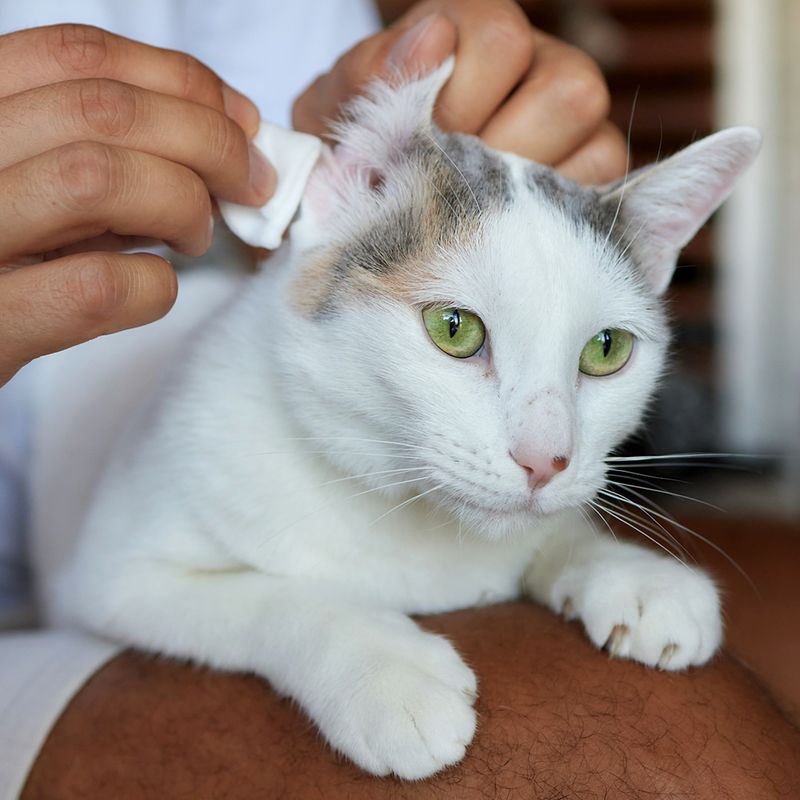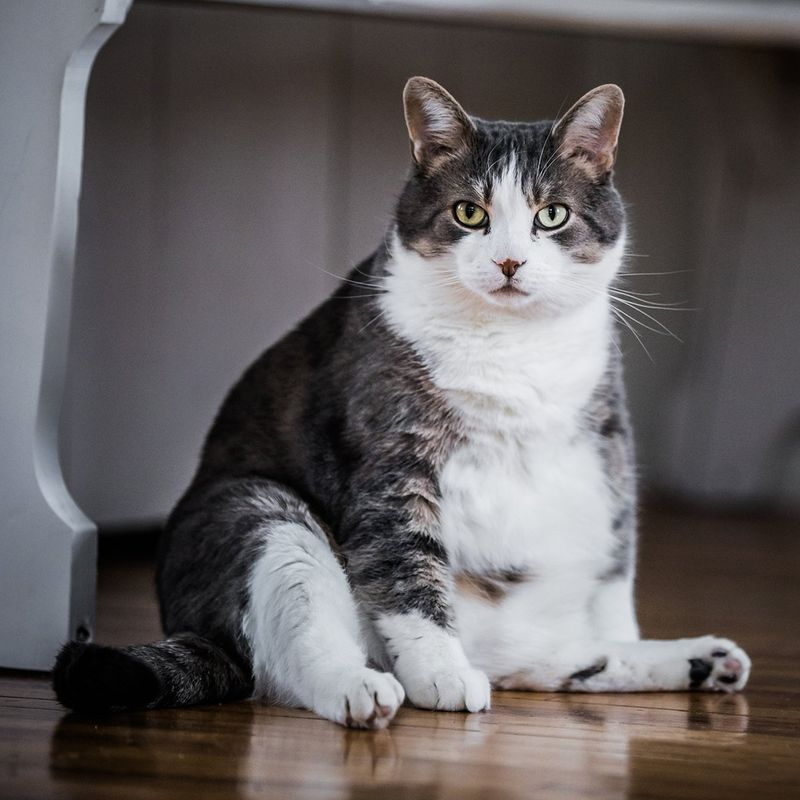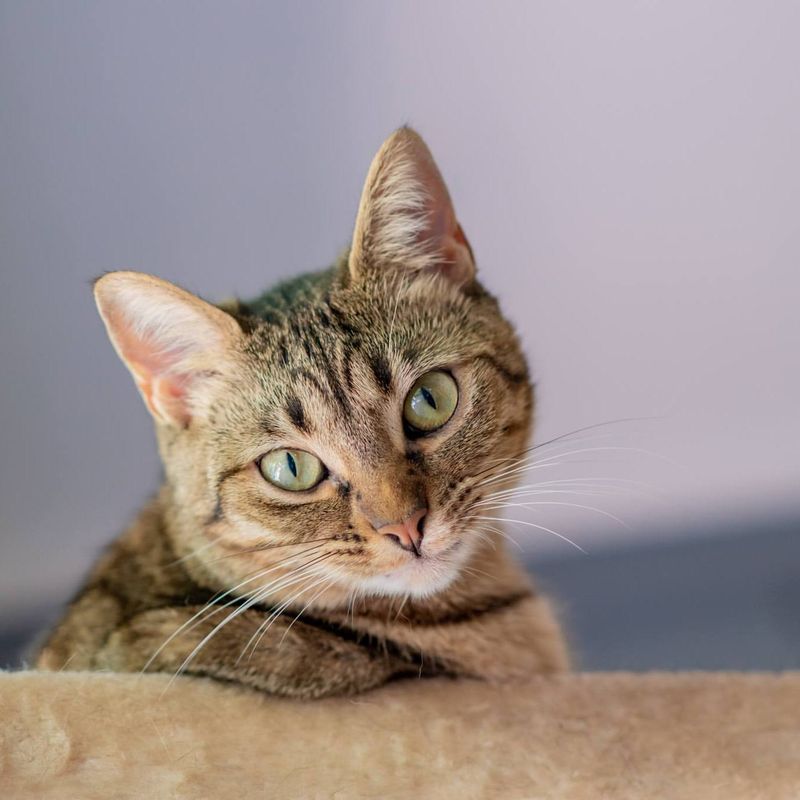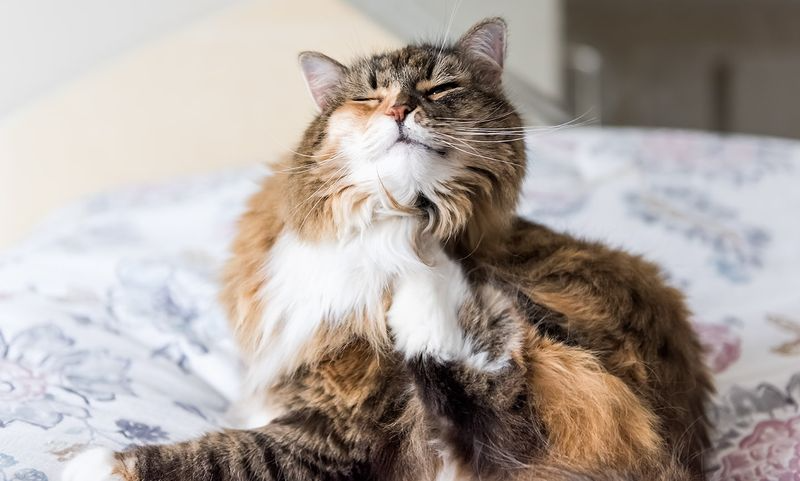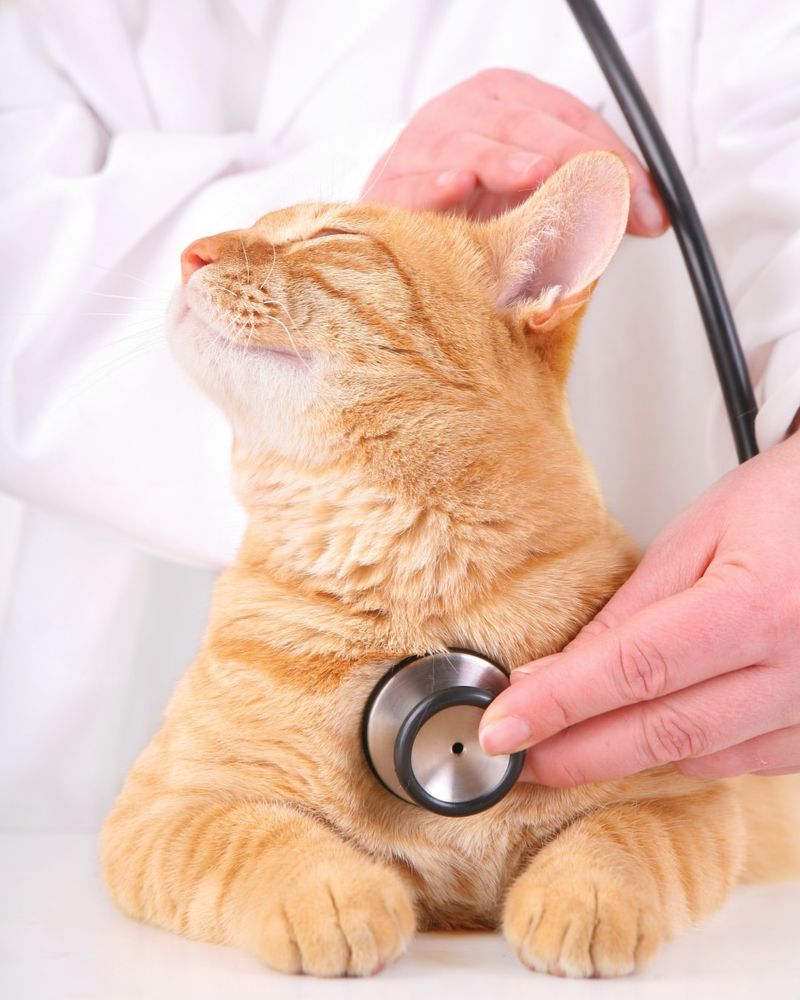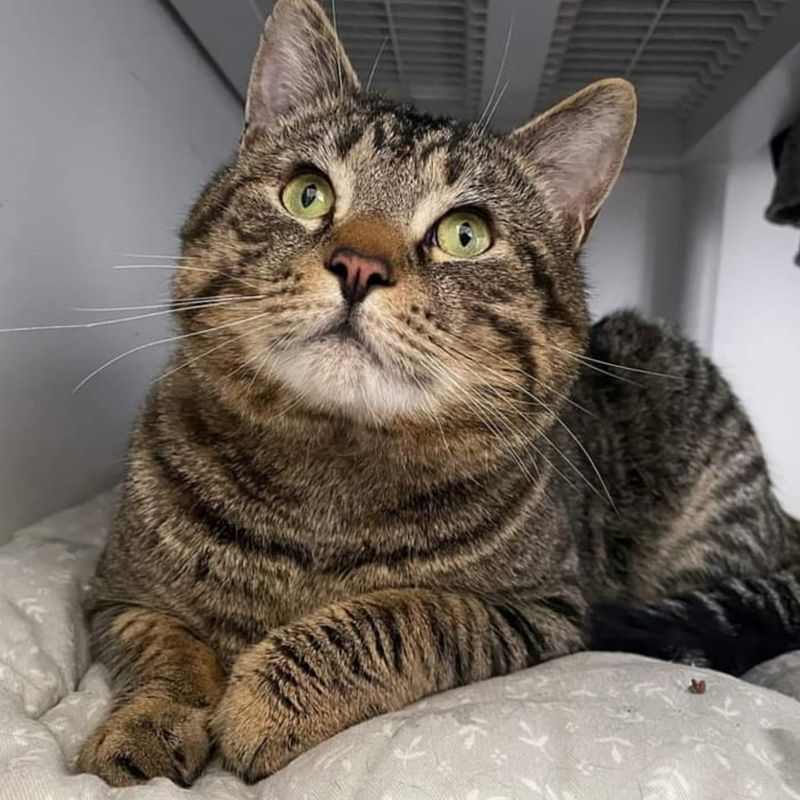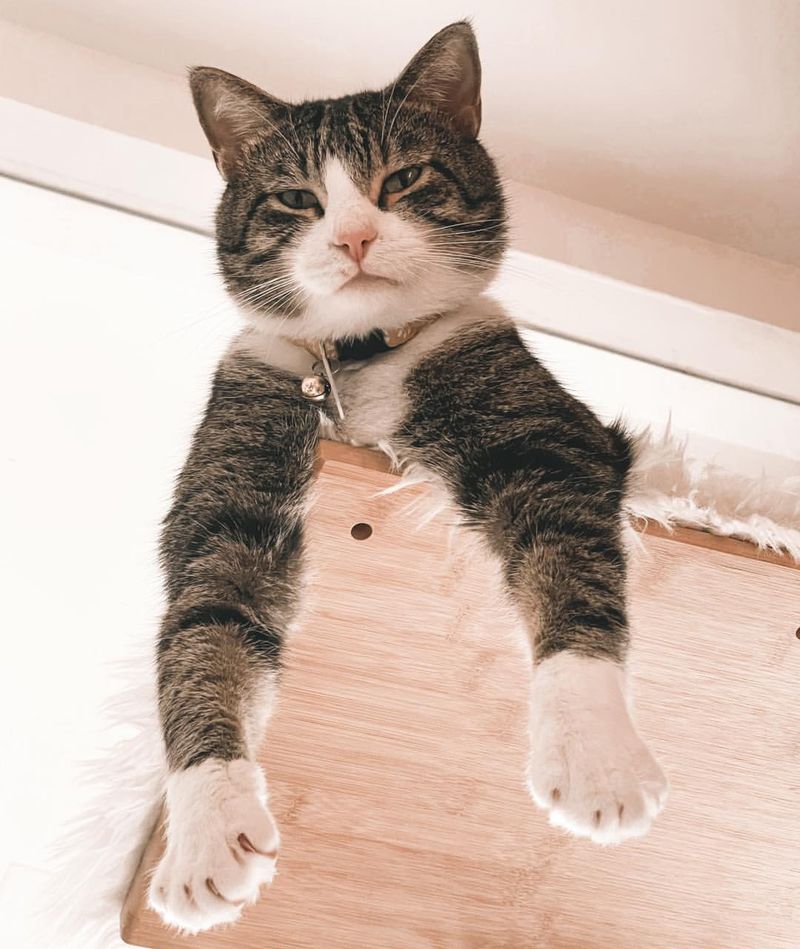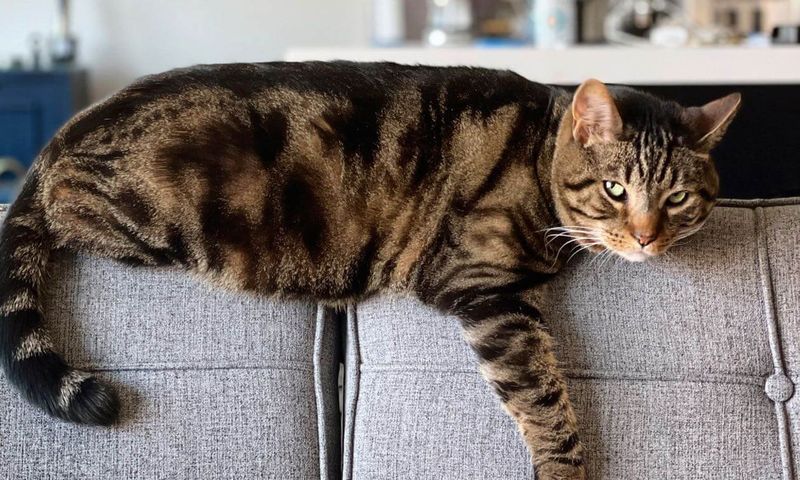📖 Table of Content:
Have you ever noticed those tiny white flakes on your cat’s fur and wondered, “Is my cat shedding snowflakes?”
Don’t worry—you’re not alone! Cat dandruff might seem like a small issue, but it can say a lot about your feline’s overall health. Whether it’s a dry winter air culprit or something more serious, those pesky flakes are worth paying attention to.
In this article, we’ll dive into 13 common reasons cats develop dandruff—some surprising, others more common—and share practical tips to help you tackle the problem.
From simple grooming tweaks to signs that it’s time to call the vet, you’ll walk away with all the tools you need to keep your kitty’s coat flake-free and fabulous.
1. Poor Diet
A cat’s diet plays a crucial role in the health of its skin and coat. Poor nutrition, especially diets lacking in essential fatty acids, can lead to dry, flaky skin. Cats require a balanced intake of omega-3 and omega-6 fatty acids to maintain healthy skin. When these nutrients are absent, dandruff can develop.
Choosing high-quality cat food enriched with these essential oils can help alleviate dandruff. Additionally, incorporating wet food or supplements may provide the necessary hydration and nutrients to improve skin health.
Consulting with a veterinarian to ensure your cat’s diet meets its nutritional needs is vital. A diet change, when guided by professional advice, can bring noticeable improvements in your cat’s coat.
2. Dehydration
Dehydration can be a subtle yet significant cause of dandruff in cats. When a cat doesn’t drink enough water, its skin can become dry and flaky. Cats are notoriously poor drinkers, so ensuring they have access to fresh water is essential.
Consider providing a water fountain to encourage drinking, as cats are often attracted to moving water. Wet food can also increase water intake, promoting better hydration.
In cases where dehydration is suspected, a veterinary consultation is necessary. They may suggest additional methods to ensure your cat stays hydrated, improving their overall skin condition and reducing dandruff.
3. Environmental Factors
Environmental factors such as dry air and temperature extremes can contribute to dandruff in cats. During winter months, indoor heating can reduce humidity, leading to dry skin. Cats exposed to such conditions may develop flakes.
To mitigate this, consider using a humidifier in your home to maintain optimal humidity levels. Providing your cat with a comfortable sleeping area away from direct heat sources is also beneficial.
Regular grooming can help distribute natural oils, combating dryness. By adjusting the environment your cat lives in, you can significantly improve its skin health and reduce dandruff.
4. Allergies
Allergies are a common yet often overlooked cause of dandruff in cats. Whether due to food, pollen, dust, or fleas, allergies can lead to skin irritation and flakiness. An itching cat might scratch excessively, worsening the condition.
Identifying and eliminating allergens can be a game-changer. Working with a vet to conduct allergy tests will help pinpoint the cause.
Treatments might include dietary changes, anti-allergy medications, or environmental adjustments. Addressing allergies not only relieves dandruff but also improves overall well-being.
5. Obesity
Obesity in cats can indirectly contribute to dandruff. Overweight cats may have difficulty grooming themselves, especially in hard-to-reach areas like the back. This lack of grooming can result in the accumulation of dandruff.
Encouraging weight loss through diet and exercise is essential. Feeding measured portions and engaging your cat in playful activities can help.
Regular grooming by the owner can also aid in distributing natural oils across the skin, reducing dandruff. Consulting a vet for a weight management plan ensures the cat achieves a healthy weight, improving grooming ability and skin health.
6. Parasites
Parasites such as fleas and mites can lead to severe skin irritation and dandruff in cats. These unwelcome visitors cause itching and scratching, exacerbating skin flakiness.
Effective parasite control methods include regular use of flea treatments and maintaining a clean living environment. A veterinarian can recommend suitable products tailored to your cat’s needs.
Preventing and treating parasitic infestations not only alleviates dandruff but also protects your cat from other health issues, ensuring they remain comfortable and healthy.
7. Skin Infections
Skin infections, whether bacterial or fungal, can be a root cause of dandruff in cats. Infections often lead to inflamed, flaky skin. Recognizing and treating these infections promptly is crucial.
Veterinary intervention is necessary for diagnosis and treatment, which may include topical or oral medications. Regular monitoring ensures the infection is clearing and not recurring.
Maintaining good hygiene and grooming practices can help prevent future infections, keeping both skin and coat healthy.
8. Hormonal Imbalances
Hormonal imbalances in cats, such as hyperthyroidism, can affect skin health and lead to dandruff. These conditions may alter oil production, causing dry, flaky skin.
Diagnosis involves veterinary tests to check hormone levels. Once identified, treatment may include medication to manage the hormonal imbalance.
With proper management, a cat’s skin condition can improve significantly, resolving issues like dandruff. Regular check-ups are essential to ensure ongoing health and well-being.
9. Grooming Habits
Cats are known for their grooming habits, but sometimes these can lead to dandruff. Over-grooming or lack of grooming due to stress or illness can result in skin issues.
Understanding the cause of any change in grooming behavior is essential. Stress reduction techniques and ensuring a peaceful environment can help.
Regular grooming by the owner not only assists in maintaining a healthy coat but also strengthens the bond between pet and owner. Monitoring grooming habits helps in identifying potential health issues early.
10. Age-Related Changes
As cats age, their skin and coat may naturally change, leading to dandruff. Older cats might produce less oil, making their skin drier.
Providing supplements like omega-3 fatty acids can support skin health in aging cats. Regular vet visits ensure any age-related issues are addressed promptly.
Gentle grooming can assist in distributing natural oils, reducing flakes and maintaining a healthy coat. Understanding and accommodating the needs of senior cats promotes their comfort and happiness.
11. Stress and Anxiety
Stress and anxiety can impact a cat’s skin condition, leading to dandruff. Changes in environment or routine may trigger stress-related grooming issues.
Identifying stressors and creating a calm, stable environment is crucial. Providing hiding spots and interactive toys can reduce anxiety.
In severe cases, consulting a vet for stress management solutions is advisable. Addressing stress not only alleviates dandruff but also enhances overall quality of life for your cat.
12. Low Humidity in the Home
When the air in your home lacks moisture, your cat’s skin can become dry and flaky. Imagine the feeling of chapped lips in the winter—uncomfortable for humans and cats alike! A common culprit is the heating systems that keep us warm but strip the air of its natural humidity.
To combat this, consider investing in a humidifier to add moisture back into the air. A small change in your home environment can make a world of difference for your feline friend.
Additionally, ensure your cat has access to fresh water at all times to help keep its skin hydrated.
13. Use of Harsh Shampoos or Cleaning Products
Certain shampoos and cleaning products can irritate your cat’s delicate skin, leading to dandruff. Think of it like using the wrong hair product and ending up with a dry scalp—unpleasant, right? Cats have sensitive skin, so it’s essential to choose products specifically designed for them.
Opt for gentle, hypoallergenic shampoos that nourish rather than strip away natural oils. Bathing your cat too frequently can also contribute to skin dryness, so keep baths to a minimum.
With the right products, your cat’s coat can remain soft and flake-free, reflecting its natural beauty.


